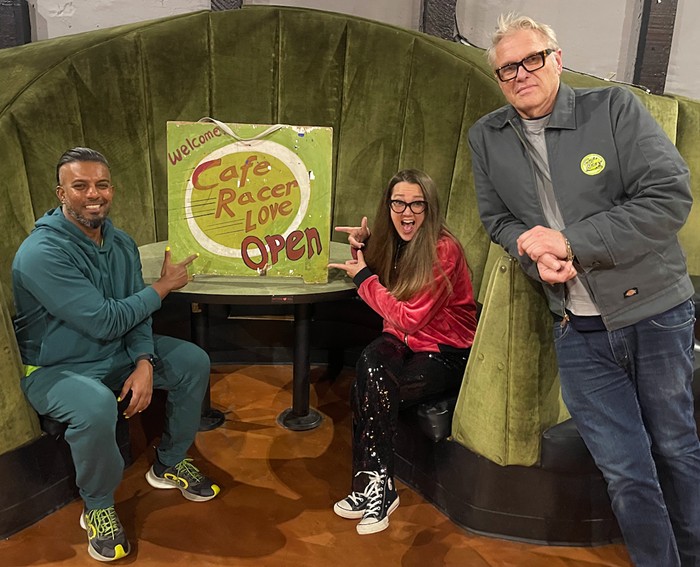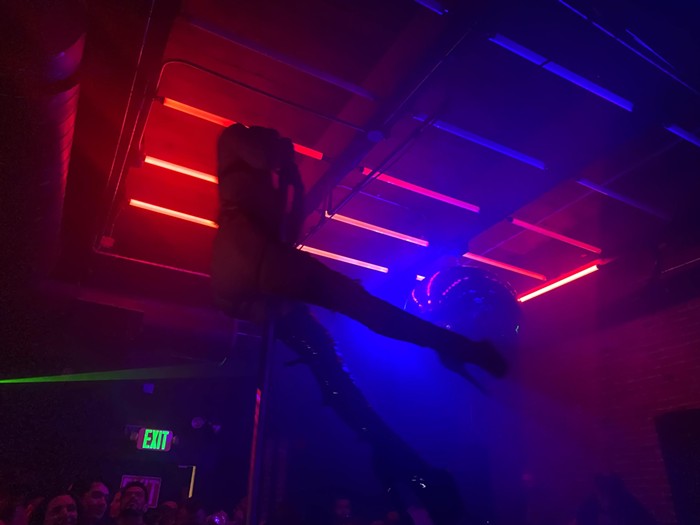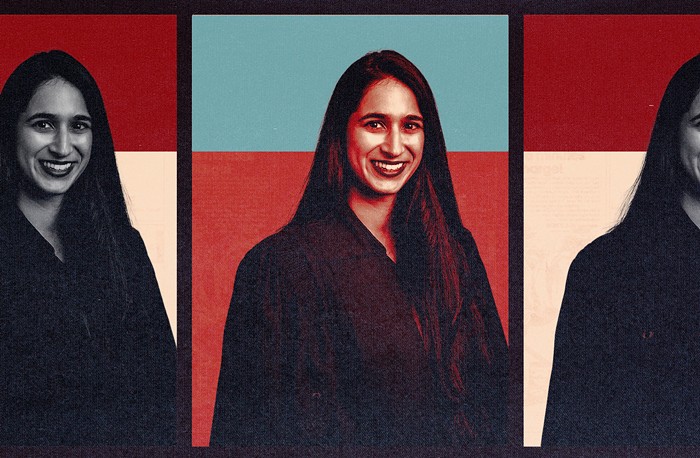
Thursday night was the final time art walkers could glimpse Kucera's tall figure in the gallery, expertly discussing the works hanging on the walls. In hushed voices, I heard people strategizing their goodbyes to the stalwart of the Seattle art scene, who moved through the space, as sure as ever.
On Monday, Kucera is leaving Seattle to decamp to a medieval castle (yes, really!) in rural southern France where he will live with his partner Larry Yocom, formerly of Gallery Frames, and his mate Shaun Warner. His employees Jim Wilcox and Carol Clifford, husband and wife, are buying the joint from him. The name will stay the same, and Kucera will serve as co-director of the space overseas, slowly decreasing his involvement over time.
But on his way out, Kucera is leaving a gift to artists in the area. In keeping with his almost four decades of support for the arts, he and Yocom donated $500,000 to Artist Trust to establish two new $10,000 fellowship awards funded in perpetuity. The first, the Greg Kucera & Larry Yocom Fellowship Award, is for Washington state artists of any background. The second is the Artist Trust Fellowship Award for Black Artists. In total, the gift is the largest one-time donation Artist Trust has received in its history.
"The motivation really is to say to the city of Seattle and the artists here that I'm going, but I won't stop thinking about you," he said over the phone recently. "And I felt like my business has been successful beyond my wildest dreams, and I could afford to do this."
The money goes to Artist Trust's endowment, with interest generated from the donation flowing to the two unrestricted $10,000 fellowships. In a press release, the organization said they believe the Black artist fellowship award is the first of its kind in the country with a permanent funding source. Though the turnaround to apply to this year's cohort is relatively quick—announced at the end of last month, applications are due on Tuesday, November 9 (interested parties apply here).
"It really speaks to Larry and Greg's, I think, longstanding vision of keeping artists central. And obviously they've done so much to support the careers of many artists and also invested in their potential," said Cezanne Garcia, Artist Trust's Board of Trustees president. "We're thrilled that they were willing to permanently endow two of the fellowships."
Additionally, Kucera told me he recently donated $50,000 to his alma mater, the University of Washington's School of Art + Art History + Design. The money is earmarked to go toward the renovation of the Jacob Lawrence Gallery, named after the prolific Black modernist painter who taught at the school for 15 years and whom Kucera had as a teacher.

The world looked a lot different when Kucera first opened his gallery in 1983 on Second Avenue when he was 27 years old. In only his second year of being open, the gallery was already showing a suite of never-before-exhibited Robert Motherwell prints, which they "sold the hell out of" to the thirsty Northwest collectors. His discerning eye and taste has propelled him through 65 art fairs, a move to their current space on 3rd and Main in the late '90s, and through shows with high profile names like Jasper Johns, Glenn Ligon, David Hockney, Jenny Holzer, Helen Frankenthaler, and Kerry James Marshall.
Kucera told me he was always delightfully surprised by buyers' appetite for excellent and challenging art here in the region. During his 1989 show, Taboo, which focused on artists who made work that got them in trouble with the government, the gallery sold four prints of Andres Serrano's controversial "Piss Christ" to Northwest collectors.
"To have the audience here in Seattle bite on that, it astonished the dealer in New York who was representing Serrano," he said.
However, he is, primarily, a passionate advocate for the 40-ish contemporary artists he represents, who are mostly local. During my time here as an art critic, I've encountered some of the most splendid works by area artists on the walls of his gallery, from Anthony White's PLA-plastic paintings of capitalist excess to Margie Livingston's canvases dragged over mountaintops and down city streets. Kucera told the Seattle Times's Brendan Kiley that his main mission in representing his artists is for them "to live the lives they want, whether it's traveling, making a nest," or "having the freedom to make art without a second job."
Fans of the Greg Kucera Gallery shouldn't be worried—the gallery isn't planning any abrupt, major changes right away. In Wilcox and Clifford's hands, the shift is "going to be a slow, steady change over a long period of time," said Kucera. But, most importantly, the ethic and vision of the gallery will remain the same: "We will not ever behave badly with artists," he said.
With these two fellowships and the gallery continuing in his name, Kucera cements his legacy here in the city. When asked about his reasons to retire, he said he senses "the world is changing in ways that just don't interest me," citing the art world's accommodation of social media, which he finds "dreary" and "impersonal." But his retirement to the rolling countryside of France also comes with a desire to see and experience the world for himself, not just filtered through the perspectives of the artists he represents and the works he hangs on the gallery walls.
“I'm 65. I've lived my entire life in Western Washington. I've never been out of Seattle for more than three weeks at a time,” he said. “I just feel like if I don't do this now, I'll never do it.”



















